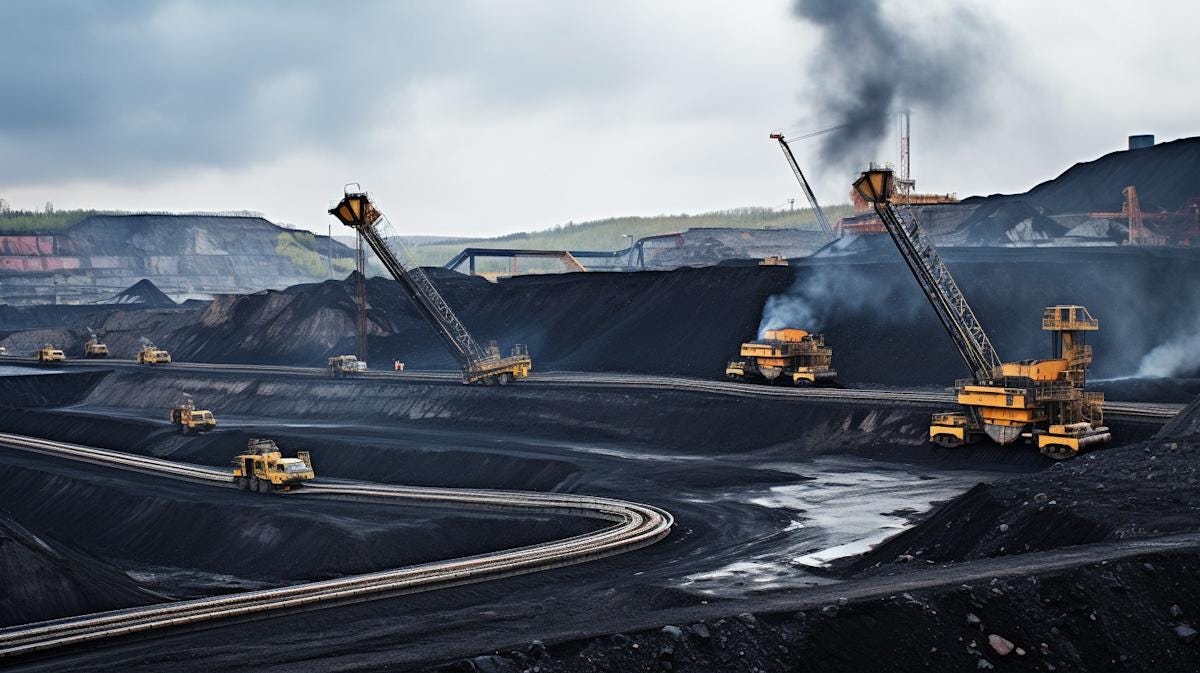Equity X-Ray: In-Depth Research #17
🏭 Exploring the world of coking coal and the company thriving in its shadows. 🌋
“The reports of coal’s death have been greatly exaggerated.”
(with apologies to Mark Twain)
⚫️ Black Gold Revisited: Why Met Coal Refuses to Die
In the early 20th century, the world’s great cities, such as Pittsburgh, Manchester, and Shanghai, were built on a foundation of steel, which relied on coal. The air was thick with soot, fortunes were made and lost on the price of black rock, and the blast furnace was the altar of modernity.
Fast forward to today, and you’d be forgiven for thinking coal is a relic, a dirty word in a world obsessed with decarbonization and ESG. But look closer, and you’ll find that not all coal is created equal and that one particular kind, metallurgical coal, is still quietly powering the world’s infrastructure boom.
This is the story of how a misunderstood commodity, and one company in particular, Alpha Metallurgical Resources (AMR), are defying the odds, and why investors might want to pay attention.
The Two Faces of Coal: Thermal vs. Metallurgical
To understand coal’s place in the modern world, you must know the difference between its two main forms. Thermal coal is the villain of climate summits, burned in power plants to generate electricity. Its days are numbered in the developed world, and its price chart looks like a ski slope. Metallurgical coal, on the other hand (also known as coking coal), is the unsung hero of steelmaking. Without it, there are no bridges, skyscrapers, wind turbines, or electric cars. It’s not just another fossil fuel; it’s a critical industrial ingredient.
Metallurgical coal’s unique chemical and physical properties allow it to be transformed into coke, a hard, carbon-rich material essential for producing steel in blast furnaces. The process is simple in theory but demanding in practice: heat coking coal in the absence of air (carbonization), drive off the volatile components, and you’re left with nearly pure carbon. This coke acts as both fuel and reducing agent, turning iron ore into molten iron, the first step in making steel.
But even within the world of coking coal, there’s a hierarchy. Hard coking coal (HCC) is the gold standard, prized for its high carbon content and low impurities. It produces the strongest coke, essential for premium steel. Medium and semi-soft coking coals are a step down, often blended with HCC to balance cost and performance. Then there’s PCI coal (pulverized coal injection), a lower-grade product injected directly into blast furnaces to stretch coke supplies and reduce costs. Finally, there’s thermal coal, which AMR produces only as a minor sideline.
Within metallurgical coal, grades are defined by their volatile matter (VM) content: the portion of coal, excluding moisture, that is released as gases and vapors when coal is heated in the absence of air.
This property is crucial: high-volatile coals (typically 31–38% VM), medium-volatile (22–31% VM), and low-volatile (17–22% VM) each play distinct roles in coke production and steelmaking. Low-volatile coking coal, for example, is especially prized for producing strong coke, while higher-volatile grades are often blended to optimize cost and performance. The VM content not only affects coke strength and yield but also influences ignition and combustion characteristics in the blast furnace.
Global coal production, 2000-2025
Keep reading with a 7-day free trial
Subscribe to Market Moves by GBC to keep reading this post and get 7 days of free access to the full post archives.



